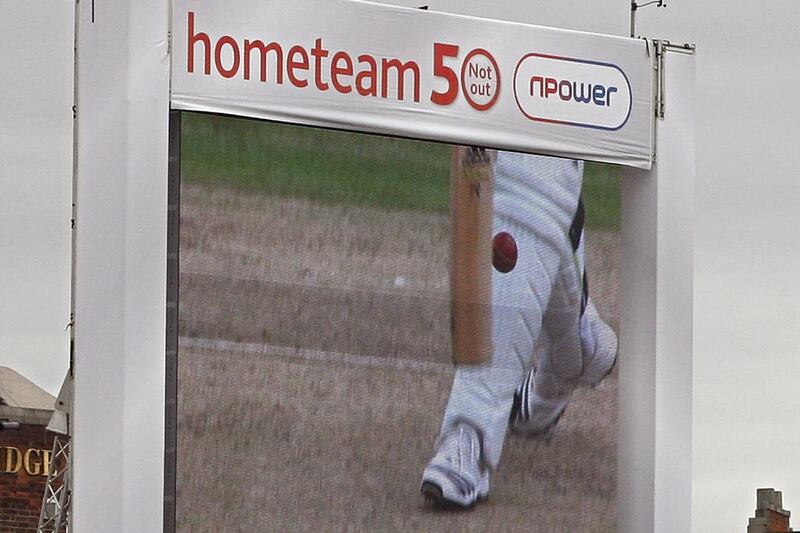One battle won, the International Cricket Council is already preparing for the next frontier as it looks to implement usage of the Decision Review System (DRS) across all international cricket.
Last week, the Board of Control for Cricket in India (BCCI), long-time objectors to using DRS, finally relented and agreed to use it on a trial basis in its upcoming five-Test series with England.
That was seen as a major victory for the ICC in its ongoing efforts to convince the BCCI to come on-board – thus far, international cricket has existed in two spheres, one in which DRS is used and the other involving all India’s bilateral commitments in which DRS is not used.
But a long-running trial of the efficacy and accuracy of various DRS technologies, conducted by scientists at the US university Massachusetts Institute of Technology (MIT), has concluded with positive enough results for the BCCI to relent.
The next step now, said the ICC, is to ensure that all international matches contain a minimum package of DRS technologies, including not just the most common – ball-tracking – but also some form of an edge-detection technology.
“Our next set of meetings are in early February, and our aim is to prepare a roadmap for the use of technology moving forward,” said Geoff Allardice, the ICC’s general manager of cricket operations.
“I do look at matches in different parts of the world and I see the different levels of technology, and you see sometimes umpires are left without conclusive evidence in one series, where in another series, they might have that conclusive evidence with more tools available.
“There are some logistical challenges, as well, about having every type of technology at every match, but overall, I think we should be striving for a more consistent delivery of technology across all international matches.”
The India-England series will not, at the moment, be using any edge-detection technology, tools such as HotSpot (which is a heat-based edge detection system), or Realtime Snicko and UltraEdge (which are sound and video-based technologies). The BCCI had looked into using HotSpot but logistical issues got in the way.
“I think you do need – you certainly need an edge detection tool as standard,” Allardice said. “Because if you go back to the days gone by when umpires were listening to the stump microphone audio and trying to judge whether that was the sound of a bat on ball or bat on pad or whatever, it was a very difficult one, not just to make a decision, but also for the people watching at home to know what the umpire was thinking.
“And certainly the sound‑based edge detection systems, like Realtime Snicko and UltraEdge have simplified those interpretations for the people watching at home and also for the TV umpires or the third umpires.”
MIT’s testing of other technologies, such as Virtual Eye (the ball-tracking system used more regularly in the southern Hemisphere), will continue. However, there are no plans to make the results of the testing public.
Follow us on Twitter @NatSportUAE
Like us on Facebook at facebook.com/TheNationalSport





